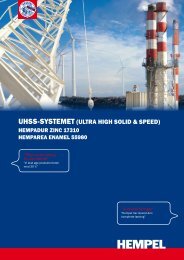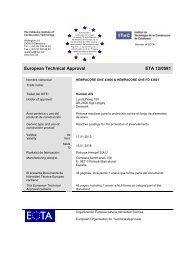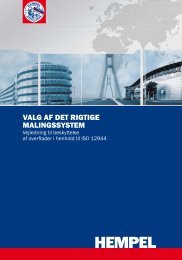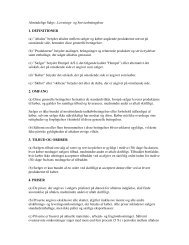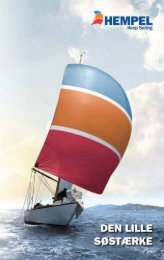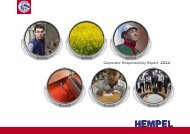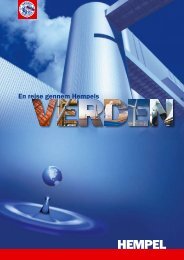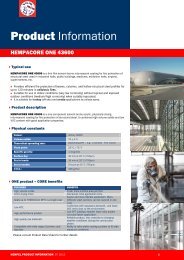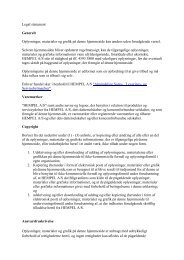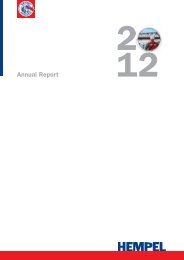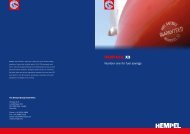Corporate Responsibility Report 2012 - Hempel
Corporate Responsibility Report 2012 - Hempel
Corporate Responsibility Report 2012 - Hempel
Create successful ePaper yourself
Turn your PDF publications into a flip-book with our unique Google optimized e-Paper software.
environment:<br />
Reducing vOC emissions<br />
At <strong>Hempel</strong>, we give careful consideration to vOC emissions during product development to<br />
ensure that the concentrations used in our products do not lead to unnecessary emissions.<br />
Our coatings protect man-made structures from corrosion. This extends the structure’s product lifecycle,<br />
helping reduce the structure’s overall environmental impact. However, coatings use chemicals that can<br />
be damaging to the environment. Our Health, Safety and environmental policy requires that we focus on<br />
sustainable technologies when developing new products, so both we and our customers can continue to<br />
improve environmental performance.<br />
Working actively to reduce VOC emissions<br />
vOCs (volatile Organic Compounds) make up the liquid part of solvent-borne paints. After application,<br />
the liquid evaporates to leave a dry painted surface. However, during this evaporation process, vOCs are<br />
released into the atmosphere. In large concentrations, some vOCs are harmful to human health and<br />
damaging to the environment and, as a result, many countries limit the maximum concentration of vOC<br />
in different products.<br />
We focus on developing coating solutions that reduce the amount of vOC used. In <strong>2012</strong>, we gave<br />
particular focus to reducing the level of vOC in our products for the marine segment. As a result of this<br />
work, we managed to bring down the average amount of vOC in our marine coatings from 451 grams per<br />
litre sold in 2011 to 420 grams per litre sold in <strong>2012</strong>, a reduction of 7 per cent.<br />
This work will continue to have an impact in 2013 and beyond. In total, we introduced 11 new marine<br />
products during <strong>2012</strong>, with an average vOC content of 188 grams per litre. These products will have an<br />
impact on the amount of vOC per litre sold in the next 1-3 years, when they have been established on the<br />
market and constitute a greater volume of the coatings we sell each year.<br />
Average contents of VOC (g/l)<br />
The diagram shows the average amount of vOC in our products by segment (Decorative is not included here as the vast majority<br />
of decorative coatings are waterborne). Yacht, like marine, saw a decrease in vOC per litre sold in <strong>2012</strong>, and this should continue<br />
in 2013 as new products become established on the market. The vOC per litre sold remained level in our Protective range in <strong>2012</strong>.<br />
However, we introduced a number of new Protective products during the year, with an average vOC content of 271 grams per litre,<br />
and we expect these products will have a signifi cant impact as they become established on the market in the coming years.<br />
* In Container, we introduced a fully waterborne coating system in 2010 called EcoBoxcoat. However, the container industry has<br />
been shrinking over the last couple of years and the market has remained reluctant to switch to a new technology in an uncertain<br />
economic climate.<br />
442 442 271 451 420 188 542 542 434 412 308<br />
VOC per litre sold 2011<br />
VOC per litre sold <strong>2012</strong><br />
Average VOC content<br />
of products introduced<br />
in <strong>2012</strong><br />
Protective<br />
Marine Container* Yacht<br />
18




